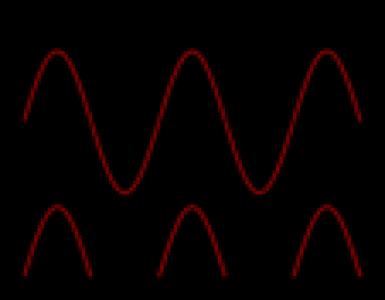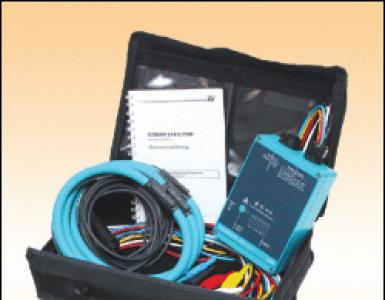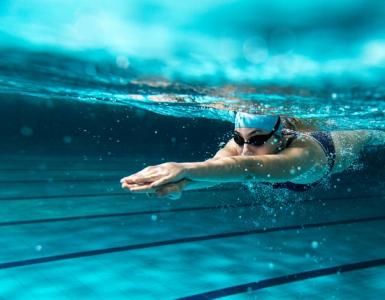Water analysis for suitability for drinking. Drinking water: how to check the quality
Water, which is used in garden areas as a drinking water, is taken from a depth of 5 to 30 meters. These are those aquifers, where external pollutants leak without problems. It is clear that we can not influence the activities of the plant in the neighborhood or agricultural land, but we can watch for ourselves. Pouring water after washing or washing dishes on a bed, the hostess "enriches" the soil aquifer with a whole bunch of chemical pollutants. The same applies to washing the machine, applying fertilizers and plant protection products, installing non-insulated cesspools.
Water is cleaned largely by the routine actions of living organisms. Energy from sunlight leads to the process of photosynthesis in aquatic plants, which produces oxygen to destroy some organic substances, such as plant and animal waste. This decomposition gives carbon dioxide, nutrients and other substances necessary for plants and animals living in water. The purification cycle continues when these plants and animals die, and the bacteria decompose them, providing new generations of organisms with food.
Someone will say that if the water is clear and odorless, then it is suitable for drinking. This is not true. According to state standards (GOST and SanPin), the quality of water is determined by the content of chemical, biological components and organoleptic properties in it. Only a small part of them "is noticeable by eye" - in color or smell and taste. If, for example, the excessive content of calcium salts can still be detected by the scale in the kettle, and the high iron content gives off a specific taste, the presence of surfactants in the water is very difficult to determine.
Human health and water quality
Unfortunately, there are many toxic substances that act only slowly or not at all on this and other processes. They are called persistent and have a great environmental problem. In Canada, we are fortunate that we have a rich supply of good sources of drinking water. Diseases associated with water - typhoid fever, cholera, dysentery - are almost unknown in this country today. The treatment of waste and sewage, the development and application of guidelines for drinking water, public health practices and education have all resulted in a reduction in water-related diseases in Canada.
How do we know what we drink? The answer is simple - check the composition of the water. The optimal solution will be to conduct water analysis in accordance with the state standard of quality. The laboratory study will allow to determine the quantitative content of substances according to the main indicators, its suitability for drinking and domestic needs, and also to determine whether it is enough to simply boil water or to install a filter for cleaning. Natural sources are not under constant control of sanitary services, therefore care of water quality falls on the shoulders of summer residents themselves.
Developing countries are less fortunate: 80% of their diseases are associated with water. The price of Canadians must pay for the prevention of diseases transmitted through water - this is a constant vigilance with regard to bacterial contamination. Periodic beach closures and local epidemics indicate that the battle is never won. These problems underscore the need to maintain strict quality control of water and improve water and wastewater treatment.
Today, toxic chemicals entering our waters from various sources, including industry, agriculture and the home, are a serious problem. Little is known about the effects of these toxic substances on human health; often the effects do not become noticeable for long periods of time, and they are difficult to distinguish from the effects of other factors that affect our daily life. Much more needs to be done to combat toxic chemical pollution. Meanwhile, we can all contribute to the prevention of water pollution without abusing water or land.
The analysis of water can be carried out at a sanitary-epidemiological station, in specialized independent laboratories, scientific institutions or as a bonus when applying to an organization for the installation of water treatment plants. Whatever you choose, the laboratory should be accredited, and the applied methods should be in accordance with the State Standard of the Russian Federation.
It has been established that mortality from certain types of cardiovascular disease is higher in soft water areas than in hard water areas in many parts of the world. Copper is another important element - for optimal absorption and metabolism of iron and for the formation of bones - and is quite common in natural water. More than one milligram per liter can make water unpleasant. . In the face of insurmountable ecological problems of the planet, every single attempt to protect the quality of water is vitally important. Together, individual actions can and do affect the quality of water and the environment as a whole.
The cost of research depends on the choice of organization and type of analysis. Laboratories carry out analyzes of three types:
- basic (abbreviated);
- full;
- specific (the definition of individual
- indicators depending on the needs of the customer).
A complete analysis is recommended to be done in the initial study of the source of water. Further, the basic annual preventive quality control is carried out. The choice of research depends on the specifics of the water. It includes from 7 to 16 indicators, the cost of analysis is about 2500 rubles. A full analysis consists of four dozen indicators - it costs about 4000 rubles. Any organization suggests the client himself to take a sample in accordance with the selection rules, which can be learned in the laboratory, and brought for analysis. If such an opportunity does not exist for a summer resident, an expert will go to the place, which increases the cost by 1000-2000 rubles. Results can be obtained within one to two days. 
You can start by taking the following measures. Avoid dangerous household products. Most proprietary household chemicals are safe to use and environmentally friendly when used in accordance with the directions on the packaging. However, some of them have a harmful cumulative effect on the environment when they are overused or misused.
Warning symbols are based on the form: the more angles a symbol has, the higher the risk. Read the label to learn how to safely use the product and what precautions to take. Buy only those ecologically dangerous products that you really need, and buy them in quantities that you can fully use so that you no longer have to worry about recycling leftovers. Use "environmentally friendly" products that are now available in your supermarket and pharmacy. The federal government supports products that are environmentally friendly. The products covered by this label have been tested and certified by the Canadian Standards Association. Each dove is a sector of society - consumers, industry and government - connected to each other to improve and protect the environment. The logo identifies products that maximize energy efficiency and the use of recycled or recyclable materials and minimize the use of environmentally hazardous substances. Consumers can make an informed choice. Look for the Environmental Choice. . Do not abuse the sewage system.
In conclusion, the laboratory issues a protocol containing information on the quantitative content of the substances under study, a conclusion on the suitability of water for domestic use in accordance with GOST 2874-84 and SanPin 2.1.4.1074-01, which also includes recommendations for cleaning and preparing water. The benefits of such studies are great: health is priceless. The cost of research can be reduced with centralized water supply. The sum is divided between neighbors and becomes minimal. 
Do not throw into the sewer only because it is convenient. Toxic household products can damage the environment and return to us through water and food. Throwing items such as dental floss, hair, disposable diapers and plastic swabs in a trash can, rather than in the toilet - these items create a lot of problems in the treatment plant; always use the completely unused contents of the oven, toilet bowl and drain panes; Carpet and furniture cleaners and polishes; bleaching agents, rust removing agents and solvents; paints and glue; and most other acid and alkaline products; keep food waste and compost it; Do not pump them into the sewer, choose latex paint instead of oil and use it instead of storing or discarding. Do not use pesticides or other hazardous materials in your garden.
According to the UN, about 25% of Ukrainians do not drink enough clean water. How to determine the quality of water consumed? There are a few simple ways.
The simplest experiment for determining the quality of water is assessment in appearance and taste. Water should be clear, free of sediment, without chemical or any other smell. Color, transparency, acidity / alkalinity, stiffness, content of dissolved substances and suspended particles can also be determined at home.
Adopt alternative methods of pest control, such as. Drawing the weeds by hand and discarding infected leaves that displace insects with insecticidal soap or water hose practicing the trigger for planting ants and traps instead of using chemical sprays using a natural insecticide such as diatomaceous earth available in garden centers fertilizing natural materials such as bone flour or peat. Do not throw dangerous products into storm drains.
Storm drains are emptied directly into nearby streams in many areas. The content of storm sewage pipes is usually not processed at treatment plants and, therefore, can cause immediate harm to fish and wild animals. Closing the banks is a typical example of pollution of storm water in many communities.
To determine the degree of transparency, a layer of 20 cm is poured into a transparent glass. Try to read the text on paper, looking through a glass with water. If this is done easily - the water is transparent. Impurities - fine dispersions of organic or inorganic origin - create a turbidity of water, which causes the growth of bacteria and does not allow the ultraviolet to destroy microorganisms.
Some communities even organize hazardous waste disposal days; contact local health and environmental specialists or waste disposal companies. Do not forget about the quality of water - even when you are having fun. If you use a motor boat, keep the engine in good condition to avoid leakage of oil, gasoline and solvents; if you are the owner of a cottage, make sure that you have a proper sewage disposal system; while camping, always bury the biodegradable waste, at least 60 meters from any source of water. Use only biodegradable soaps and take with you non-biodegradable garbage for proper disposal. Acquaintance with environmental problems, the desire to change their attitude, behavior and expectations, to collect additional information on environmentally friendly products and methods that encourage and support federal, provincial and municipal actions on environmental issues, to unite and support local and national environmental groups that work solve environmental problems; they always need more volunteers and different talents to boycott environmentally harmful products and allow stores to know why participating in public hearings, participating in advisory boards, reviewing review committees, requesting information as a citizen, you have these rights and you should take advantage of these opportunities to inform their friends and educate their children.
- Motor boats can pollute the water through gasoline leaks and spills.
- Think about using a sailboat, boat, canoe or kayak.
The color of the water is determined in the same way: pour 100 ml of water into a transparent glass and examine it against a white paper background. The organic substances decomposed in water give the water a dark color.
At home, it is possible to determine the hardness of water by soaping: if the soap is badly foamed in water, the water is stiff. The same can be said about water, which forms a deposit during boiling.
In addition, sometimes your water seems cloudy, and you wonder why. The answer may be that there is too much iron in your water. We need to find out why this can be and what we can do about it. The best way to get close to this is with home iron testing.
The chemical element of iron is metal, and it exists in your body and throughout the earth. Rivers, lakes and groundwater naturally contain iron. It can also be released into water through industrial waste, processing of iron ore, corrosion of iron and natural deposits.
The smell of water can also tell a lot about its purity. First, heat the water to 20 ° C, then - to 60 °. The putrid smell of water indicates the presence of hydrogen sulfide in its composition. To analyze the water for taste in a clean container, boil a small amount of water for 5 minutes, then cool to 20 ° -25 ° C. If the water has a sweetish taste, it contains gypsum, bitter - magnesium salts, astringent - iron salts. The putrefactive taste imparts to the water the decomposition products of plant or animal organisms.
When rain falls or snow falls, it moves along the ground, where iron deposits are located in the soil. Iron is mixed with water, and both substances enter the underground water supply. We get water in our homes from this water supply, so in the end we get iron in our water.
In the shells and pipes of the water well, iron can be contained. When water comes in contact with iron, it begins to corrode. You can see this corrosion in the form of rust. When the rust breaks from the pipes and falls into the water, the water you get from your tap will contain iron.
Filtration can detect the presence of foreign particles in the water. To do this, the water must be protected for some time, after which it must be filtered.
It is believed that the weight of water also indicates its quality - more light water is considered good.
Add a weak solution of potassium permanganate to water. If the liquid quickly turns yellow - the water is substandard.
It's easy to say that you need to check your water for iron. For example, if you notice that your water is, apparently, yellow or red, there may be iron in the sample, and it's time to test the water for iron. Laboratories advertise their services in local telephone books in the section "Laboratories - Services". You can call any of these laboratories and find out what fees are charged for testing. This is a very convenient way to conduct this type of testing, because scientists from the laboratory will be able to tell exactly how much iron is present in your water.
Also, the quality of water can be judged by holding it up. To do this, in a small transparent container (for example, a 3-liter jar), pour water, and leave for 2-3 days in a dark place. After this time, inspect the liquid: the poor quality of water can speak its greenish shade, film on the surface, plaque or stains on the walls of the tank. And on the contrary: if the water is clear, there is no sediment on the walls - it is of good quality.
It is also very easy to check for the presence of iron in water yourself. You will need to purchase an iron check kit from your local home repair store. Then you take a sample of your water. The test kit will contain test strips, which you will need to place in a sample of water. Move it back and forth for 30 seconds. After 30 seconds, remove the sample and wait two minutes. Then you can compare your test strip with a color chart to determine how much iron is in your water.
What are the safe levels of iron that you can have in your water? The Environmental Protection Agency classified iron according to the standards of medium pollution. This means that water can have only 3 milligrams of iron per liter. When water meets this standard, it should not have an unpleasant taste or odor and should not cause any side effects. It should also look like water without any change in appearance. This means that you do not drink rust.
![]() On the glass or mirror, apply a small drop of water. Wait for the liquid to evaporate. After that, look at the surface: if it remains clean, the water is also clean. If the glass formed any spots - this is a sign of poor quality of water.
On the glass or mirror, apply a small drop of water. Wait for the liquid to evaporate. After that, look at the surface: if it remains clean, the water is also clean. If the glass formed any spots - this is a sign of poor quality of water.
If you have an aquarium - follow its inhabitants: many of them are very sensitive to water quality. For example, freshwater mollusks of the Unionidae family close the shell doors, if impurities appear in the water, even in small quantities - this is stated in the article of the newspaper Ecoportal.su.
However, all these methods have their drawbacks. The most complete information can be obtained by ordering a full analysis of water from specialists. And if the water is not suitable for use, you can think about installing water treatment equipment from leading Ukrainian producers -













